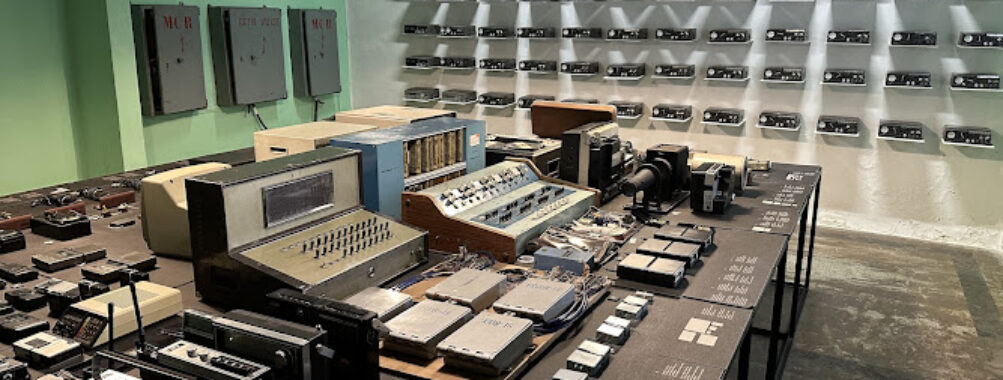
House of Leaves Museum
“`html
Table of Contents
Description
The House of Leaves Museum is one of those places that sticks with you long after you’ve left. It’s not your typical history museum filled with dusty artifacts and predictable displays. Instead, it’s a place that whispers secrets—literally and figuratively—about Albania’s shadowy past. If you’ve ever been drawn to stories of espionage, surveillance, and the quiet tension of life under watchful eyes, this museum will feel like stepping into a living story.
Housed in a plain-looking building that once served as the headquarters for Albania’s secret police, the museum’s atmosphere is thick with history. You can almost feel the weight of the past pressing through the walls. The creak of the floors, the dim light filtering through narrow windows—it all adds to the eerie authenticity. I remember walking through the first time and feeling a chill that had nothing to do with the air conditioning. It’s the kind of place that makes you stop and think about freedom, fear, and how fragile privacy can be.
The exhibits are thoughtfully curated, mixing documents, photographs, and actual surveillance equipment used during the communist regime. You’ll see hidden microphones, typewriters used for coded messages, and even rooms designed for interrogation. It’s unsettling, yes, but also fascinating. The museum doesn’t glamorize the past—it confronts it head-on. And that’s what makes it powerful.
While some visitors find the experience emotionally heavy, others describe it as one of the most eye-opening museums in the Balkans. It’s not flashy or high-tech, but it doesn’t need to be. The authenticity of the space speaks louder than any digital display ever could.
Key Features
- Authentic building that once housed Albania’s secret police headquarters
- Exhibits on espionage, surveillance, and life under communist rule
- Original equipment like listening devices, cameras, and typewriters
- Audio-visual displays with personal testimonies and historical recordings
- Guided tours available for deeper historical context
- Restrooms available on-site for visitors’ convenience
- Compact layout that allows for an immersive, self-paced visit
Best Time to Visit
If you’re planning a trip, the best time to visit is during spring or fall. The weather in Tirana is mild, and you can comfortably wander around the city before or after your museum visit. Summer can be quite warm, and while the museum is indoors, the crowds tend to be heavier. Personally, I prefer visiting on a weekday morning when it’s quieter—you can really take your time reading the displays and letting the atmosphere sink in.
Winter visits have their own charm too. There’s something about the gray Albanian sky that matches the tone of the museum perfectly. It’s introspective, almost cinematic. Just remember, the museum can be emotionally intense, so it’s worth planning something lighter afterward—maybe a stroll through the nearby park or a coffee at a local café to decompress.
How to Get There
Reaching the museum is fairly straightforward if you’re staying in central Tirana. Most travelers either walk or take a short taxi ride from the main square. The museum sits in a quiet but central area, surrounded by embassies and government buildings, so it’s easy to find. If you’re using public transport, local buses stop nearby, though I’ll admit, navigating Albanian bus routes can be a bit of an adventure for first-timers.
For those who like to explore on foot, the walk itself is part of the experience. You’ll pass through streets that still hold traces of the city’s layered history—crumbling facades beside sleek new cafés, locals chatting on benches, and the occasional street artist sketching in the shade. It’s an easy way to feel the pulse of modern Tirana before stepping back into its more secretive past.
Tips for Visiting
Here’s the thing—this isn’t a museum you rush through. Give yourself at least an hour, maybe two, to really absorb it all. The displays are detailed, and there’s a lot of reading involved. If you’re the kind of traveler who likes to dig into context and understand the “why” behind the exhibits, you’ll appreciate the slower pace.
- Take a guided tour if you can. The guides are passionate and often share personal stories that aren’t written on the walls.
- Bring an open mind. Some sections can be emotionally heavy, especially the interrogation rooms and testimonies.
- Photography is limited in certain areas, so check the rules before snapping pictures.
- Dress comfortably. The building isn’t large, but there are stairs and narrow hallways that can get warm in summer.
- Visit early or late in the day if you want to avoid crowds and really take in the atmosphere.
- Reflect afterward. Grab a coffee nearby and let it all sink in—it’s that kind of museum.
One thing I’ve noticed is that visitors often leave quieter than when they arrived. It’s not sadness exactly—it’s more like contemplation. The House of Leaves doesn’t just show you history; it makes you feel it. And that’s rare. You walk out with a deeper understanding of what life must have been like when every conversation could be overheard, every neighbor a potential informant. It’s unsettling, but also strangely grounding.
In a world obsessed with selfies and social media, this museum reminds you of the value of privacy and truth. It’s a must-see for travelers who crave more than just pretty photos—those who want to understand the soul of a place, even the darker corners. If you’re that kind of traveler, the House of Leaves will leave a mark on you, just as it did on me.
“`
Location
Places to Stay Near House of Leaves Museum
Find and Book a Tour
Explore More Travel Guides
No reviews found! Be the first to review!